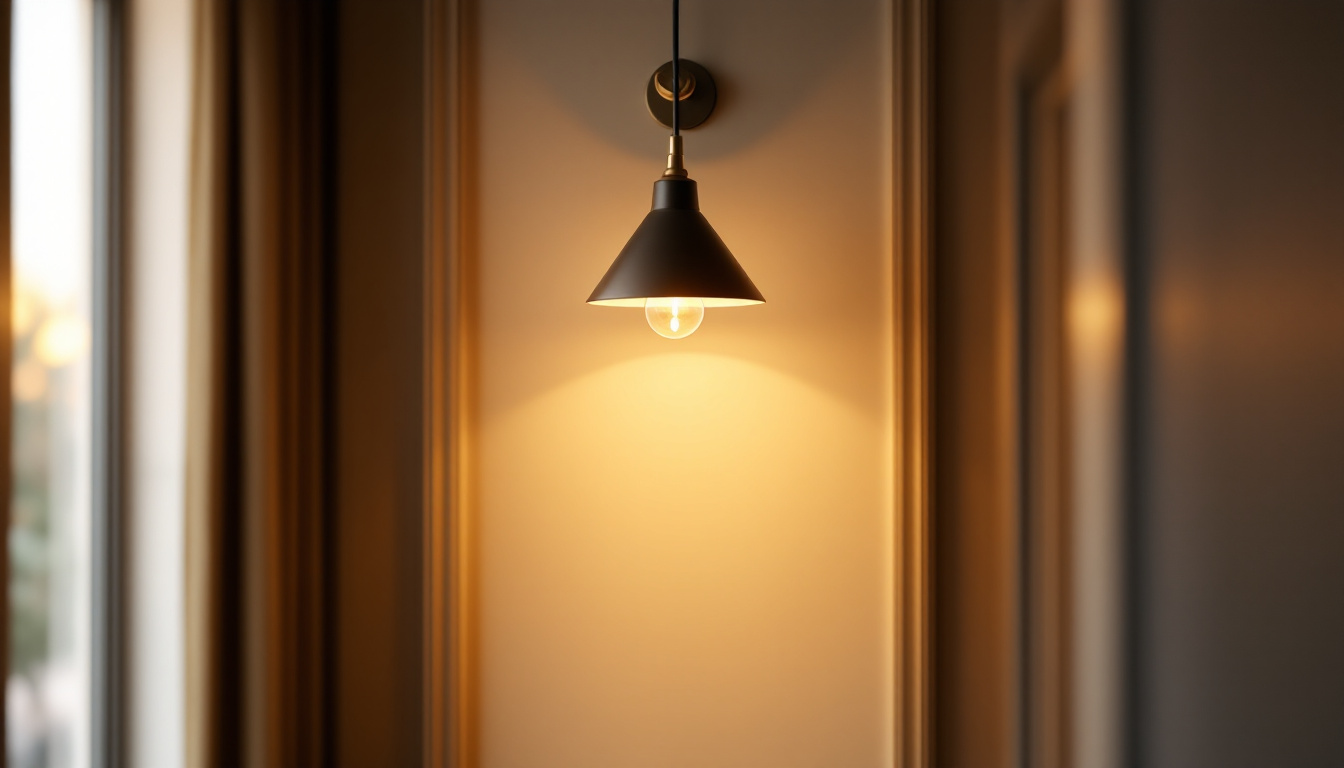
In the ever-evolving world of lighting technology, motion sensors have emerged as a game-changer for contractors. These devices not only enhance energy efficiency but also provide a myriad of benefits that streamline operations and improve client satisfaction. For lighting contractors, understanding the advantages of motion sensors is essential for staying competitive in the market.
Motion sensors are devices that detect movement within a specified area and activate lighting systems accordingly. They come in various types, including passive infrared (PIR), ultrasonic, and dual technology sensors. Each type has its unique features and applications, making it crucial for contractors to choose the right one for their specific projects.
Passive infrared sensors detect body heat and are commonly used in residential and commercial settings. They are ideal for areas where people frequently move, such as hallways and restrooms. Ultrasonic sensors, on the other hand, emit sound waves to detect motion, making them suitable for larger spaces or areas with obstacles that might block infrared signals.
Dual technology sensors combine both PIR and ultrasonic technologies to minimize false triggers and enhance reliability. This makes them particularly effective in environments with varying levels of activity, ensuring that lights are activated only when necessary.
Motion sensors operate by monitoring changes in their environment. When a person enters the detection zone, the sensor recognizes the movement and sends a signal to the lighting system to turn on. After a predetermined period of inactivity, the sensor will turn the lights off automatically. This feature not only conserves energy but also extends the lifespan of lighting fixtures.
Incorporating motion sensors into lighting projects offers numerous advantages for contractors. From energy savings to enhanced security, these devices can significantly improve the overall efficiency of lighting installations.
One of the most significant benefits of motion sensors is their ability to reduce energy consumption. By ensuring that lights are only on when needed, contractors can help clients save on electricity bills. This is particularly beneficial in commercial settings where lighting can account for a substantial portion of energy costs.
Moreover, motion sensors contribute to sustainability efforts. As more businesses and homeowners seek to reduce their carbon footprint, energy-efficient lighting solutions become increasingly attractive. Contractors who offer motion sensor installations can position themselves as environmentally conscious and forward-thinking.
Lighting motion sensors also play a crucial role in enhancing security. By illuminating areas only when movement is detected, they deter potential intruders and provide peace of mind for property owners. This is especially important for outdoor lighting, where dark corners can create vulnerabilities.
In addition, many motion sensors can be integrated with security systems, allowing for real-time alerts and notifications. This added layer of security can be a selling point for contractors looking to attract clients who prioritize safety.
Clients appreciate the convenience that motion sensors provide. No longer do they have to fumble for light switches in dark spaces; the lights turn on automatically as they enter a room. This seamless experience enhances user satisfaction and can lead to positive word-of-mouth referrals for contractors.
Furthermore, motion sensors can be programmed to suit individual preferences, such as adjusting the brightness or setting specific activation times. This level of customization allows contractors to tailor solutions to meet the unique needs of their clients.
Motion sensors can be utilized in various applications, making them versatile tools for lighting contractors. Understanding where and how to implement these devices can lead to successful project outcomes.
In commercial environments, motion sensors are particularly effective in high-traffic areas such as offices, retail stores, and warehouses. By installing sensors in hallways, restrooms, and break rooms, contractors can ensure that lights are only active when people are present, significantly reducing energy waste.
Additionally, motion sensors can enhance the shopping experience in retail settings. For instance, lights can automatically brighten when customers enter a store, creating a welcoming atmosphere. This not only saves energy but also encourages customer engagement.
In residential applications, motion sensors are ideal for outdoor lighting, garage areas, and pathways. Homeowners can benefit from the convenience of having lights turn on automatically when they arrive home or when guests visit. This feature is particularly useful for enhancing safety in dark areas.
Moreover, smart home integrations allow homeowners to control motion sensors remotely, providing even greater flexibility and convenience. This trend is becoming increasingly popular, and contractors who offer smart lighting solutions can attract tech-savvy clients.
In industrial settings, motion sensors can improve safety and efficiency. For example, in manufacturing facilities, lights can be programmed to activate only when workers are present, reducing energy costs while ensuring adequate visibility for tasks. This not only saves money but also enhances productivity.
Furthermore, motion sensors can be used in loading docks and storage areas to ensure that lights are only on when needed, reducing the risk of accidents and improving overall safety standards.
While motion sensors offer numerous benefits, proper installation is crucial to maximize their effectiveness. Contractors must consider various factors to ensure optimal performance.
The placement of motion sensors is critical. They should be installed in locations where they can effectively detect movement without obstructions. For instance, placing sensors in corners can provide a wider coverage area, while ensuring that they are not blocked by furniture or other objects is essential for reliable operation.
Additionally, understanding the detection range of each sensor type is vital. Contractors should assess the specific needs of each project to determine the best sensor type and placement strategy.
Once installed, motion sensors require calibration to function optimally. Contractors should take the time to adjust settings such as sensitivity and duration to suit the specific environment. For example, in high-traffic areas, a shorter duration may be appropriate, while in less frequented spaces, a longer duration may be necessary.
Providing clients with clear instructions on how to adjust settings can also enhance user experience and satisfaction. This empowers clients to make changes as needed, ensuring that the lighting system remains efficient over time.
For maximum efficiency, motion sensors can be integrated with other lighting control systems, such as timers and dimmers. This allows for a more comprehensive approach to lighting management, further enhancing energy savings and user convenience.
Contractors should be well-versed in the various integration options available and be prepared to offer clients tailored solutions that meet their specific needs. This expertise can set contractors apart in a competitive market.
While motion sensors provide numerous benefits, there are challenges that contractors may face during installation and maintenance. Understanding these challenges and having solutions in place can help ensure successful project outcomes.
One of the common issues with motion sensors is false triggering, which can lead to unnecessary energy consumption. Factors such as pets, passing vehicles, or even changes in temperature can cause sensors to activate when no one is present.
To mitigate this issue, contractors should select sensors with adjustable sensitivity settings. Additionally, placing sensors strategically to minimize exposure to potential triggers can help reduce false activations.
Educating clients about the functionality of motion sensors is essential for ensuring satisfaction. Many clients may not fully understand how to use the technology effectively, which can lead to frustration and dissatisfaction.
Contractors should provide comprehensive training and resources that outline how to operate and maintain the sensors. This proactive approach can foster positive relationships and encourage repeat business.
The rapid pace of technological advancements can pose challenges for contractors who must stay updated on the latest products and features. Regular training and attending industry events can help contractors remain informed and competitive.
Moreover, partnering with reputable manufacturers can provide contractors with access to the latest innovations and support, ensuring that they can offer clients the best solutions available.
The future of motion sensors in lighting is promising, with ongoing advancements in technology and increasing demand for energy-efficient solutions. As smart home technology continues to gain traction, motion sensors will likely play an integral role in the development of intelligent lighting systems.
As the Internet of Things (IoT) becomes more prevalent, the integration of motion sensors with smart home systems will enhance user experience. Homeowners will have greater control over their lighting environments, allowing for personalized settings that adapt to their lifestyles.
This trend presents an opportunity for lighting contractors to expand their service offerings and cater to a growing market of tech-savvy clients. Staying informed about emerging technologies will be crucial for contractors looking to thrive in this evolving landscape.
With an increasing emphasis on sustainability, motion sensors will continue to be a vital component of energy-efficient lighting solutions. As businesses and homeowners seek to reduce their environmental impact, the demand for motion sensor installations will likely rise.
Contractors who prioritize sustainable practices and offer energy-efficient solutions will be well-positioned to attract clients who are committed to eco-friendly initiatives.
Lighting motion sensors are revolutionizing the way contractors approach lighting installations. By improving energy efficiency, enhancing security, and providing a better user experience, these devices offer numerous benefits that can lead to successful project outcomes.
For lighting contractors, understanding the various types of motion sensors, their applications, and installation considerations is essential for staying competitive in the market. As technology continues to advance, embracing these innovations will ensure that contractors can meet the evolving needs of their clients while contributing to a more sustainable future.
Incorporating motion sensors into lighting projects not only enhances efficiency but also positions contractors as leaders in the industry. By staying informed and adapting to new trends, lighting contractors can continue to thrive in an ever-changing landscape.
Ready to elevate your lighting projects with the efficiency and innovation of motion sensors? Look no further than LumenWholesale for the highest quality, spec-grade lighting products at unbeatable wholesale prices. Our extensive selection is designed to meet the highest industry standards, ensuring you get reliable, high-performance lighting for every project. Plus, with free shipping on bulk orders, you can enjoy premium lighting solutions at the best value — without hidden fees or compromises. Don’t miss out on the perfect blend of quality, affordability, and convenience. Visit LumenWholesale today and experience wholesale lighting at the best value for your next installation.

Discover the common pitfalls lighting contractors face when installing hallway light fixtures.

Discover essential tips and expert strategies for lighting contractors to master the use of fluorescent lighting.

Explore how innovative lighting solutions for walkways can enhance energy efficiency, reduce costs, and improve safety.

Discover the art of optimizing lighting efficiency with Scounce.